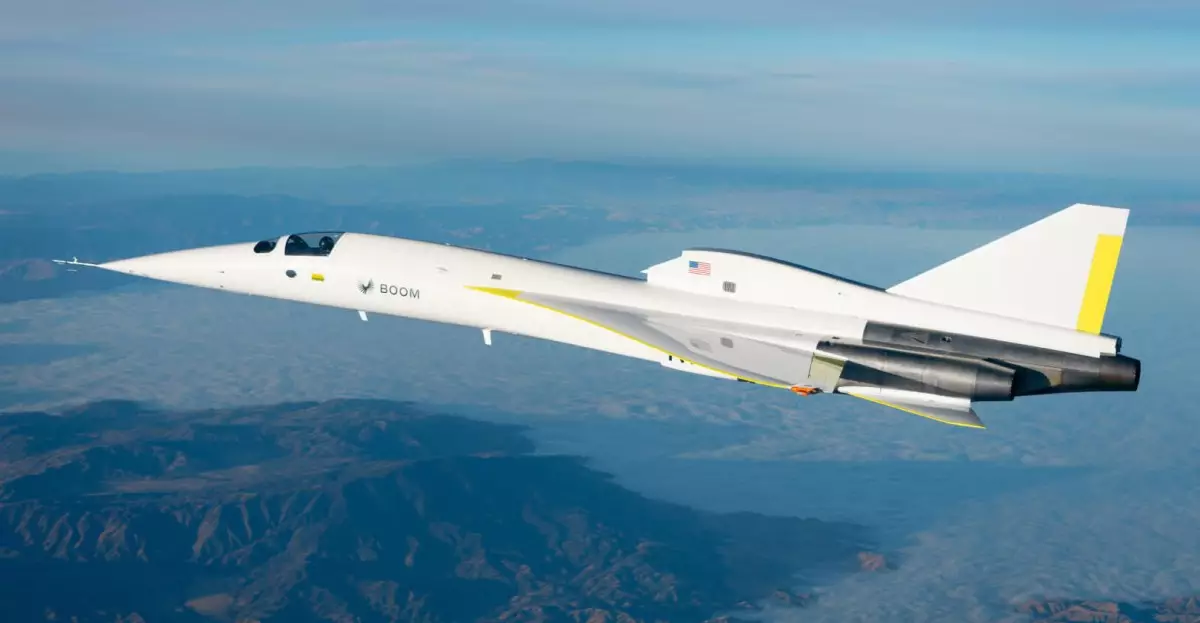In a remarkable turn of events in the realm of modern aviation, the Boom Supersonic XB-1 prototype has made headlines by breaking the sound barrier three times during its most recent test flight. This achievement, which occurred during its 12th flight at the Mojave Air & Space Port in California, marks a significant milestone in the pursuit of commercial supersonic travel. The XB-1 managed to reach a speed of Mach 1.1, translating to approximately 844 miles per hour, showcasing the potential for the next generation of air travel. As private enterprises increasingly enter the aviation market, this successful flight underscores a pivotal moment for Boom Supersonic and the broader aviation industry.
The XB-1 is not merely an experimental machine; it is the ambitious forerunner of Boom’s future Overture airliner. Designed to carry up to 64 passengers at cruising speeds of Mach 1.7, the XB-1 serves as a critical testbed for technologies that could revolutionize air travel, rekindling the thrilling concept of supersonic flights that the legendary Concorde once offered until its retirement in 2003. However, the path to this moment has been far from linear. Initially slated for its first flight in 2021, delays pushed the XB-1’s inaugural test flight to March 2024. Such setbacks are common in the aerospace sector, where safety and precision are paramount.
Notably, the XB-1’s test flight represents the first instance of a civil aircraft breaking the sound barrier. Unlike the Concorde, which was a collaborative effort between government entities in the UK and France, Boom is forging its path as a privately held company determined to lead the charge in supersonic travel. The flight took place in the “Bell X-1 Supersonic Corridor,” a region named in honor of the first aircraft to breach the sound barrier back in 1947. The XB-1 reached altitudes of 34,000 feet, representing an impressive leap from its previous test flight, which peaked at nearly 29,500 feet.
Despite this groundbreaking achievement, there remains a significant amount of work before the Overture airliner can take to the skies. Boom’s ambition is a long-term endeavor, with a projected timeline targeting its first flight by 2030. It will require continued testing, design tweaks, and rigorous assessment to ensure that safety standards are not just met but exceeded. The XB-1’s successful flight hints at what is possible; however, it serves more as a hopeful beacon than a final endpoint.
With funding already surpassing $700 million and contracts in place to deliver supersonic aircraft to major airlines like United Airlines and American Airlines, Boom Supersonic is laying the groundwork for a new era of air travel. The agreements with these carriers include options for additional purchases, indicating robust market interest in the rebirth of supersonic flight. However, it is crucial to acknowledge that financial backing is only one facet of the multifaceted journey that lies ahead.
The 12th test flight of the XB-1 prototype stands as a testament to human ingenuity and persistence. While the dream of supersonic travel has faced numerous challenges over the decades, the resurgence instigated by Boom Supersonic is promising. As the industry watches closely, the successful leap into the supersonic realm could reshape the future of commercial aviation. With further advancements, the XB-1’s triumph could soon lead to a time where jetting across continents at unprecedented speeds becomes the norm rather than the exception. The sky is truly the limit.

